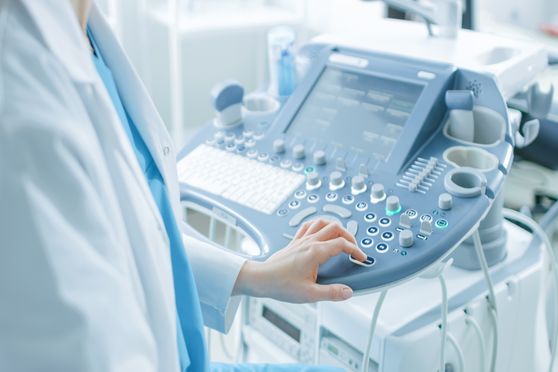IIT Madras research to help create clearer ultrasound images


Researchers at the Indian Institute of Technology (IIT) Madras have found a way to reconstruct ultrasound images for more accurate diagnosis of diseases, detection of minute abnormalities, better real-time image-guided biopsy procedures and treatment monitoring applications.
Ultrasound imaging is used to capture real-time images inside the human body. It has a wide range of clinical applications in diagnosis and treatment of medical conditions. The technique is widely used to diagnose the cause of pain, swelling and infection in internal organs and to examine foetus in pregnant women. The new technique can provide a clearer and high-quality visualisation of ultrasound images.
“This research could potentially facilitate several applications such as early detection and better diagnosis of diseases, detection of renal stones, better real-time image-guided biopsy procedures and treatment monitoring applications,” said Arun K. Thittai, professor, department of Applied Mechanics, IIT Madras.
The researchers claim to have developed a new beamforming technique that can outperform other existing techniques and yield the best image resolution throughout the field of view. The research findings have been published in a peer-reviewed journal Scientific Reports.
The main component of an ultrasound machine is a beamformer. Over the years, there have been several techniques identified to improve the quality of the reconstructed image by changing the beamformer.
“The main disadvantage in these techniques is low noise rejection, during which images are corrupted with more noise, which is amplified by multiplicative effect of these existing techniques and ‘low contrast to noise ratio’ as even though these techniques can improve resolution, they degrade contrast,” said Anudeep Vayyeti, a research scholar at IIT Madras.
“These drawbacks make it challenging to detect small changes in the underlying tissue. Hence, we have developed a new technique called Filtered Delay optimally-weighted Multiply and Sum (F-DowMAS), which will provide images that have a higher quality compared to existing technologies,” he added.
“The enhancements will help clinicians notice the minute changes in anatomy, thereby helping in early and better diagnosis of diseases. Also, the technique can be easily integrated into the existing commercial ultrasound scanner platforms without any need for additional hardware changes, which makes this an economical and feasible solution,” said Vayyeti.
The researchers aid the F-DowMAS technique can improve both resolution and contrast of an image simultaneously and parallelly it can also reduce noise levels to a greater extent in the reconstructed image.